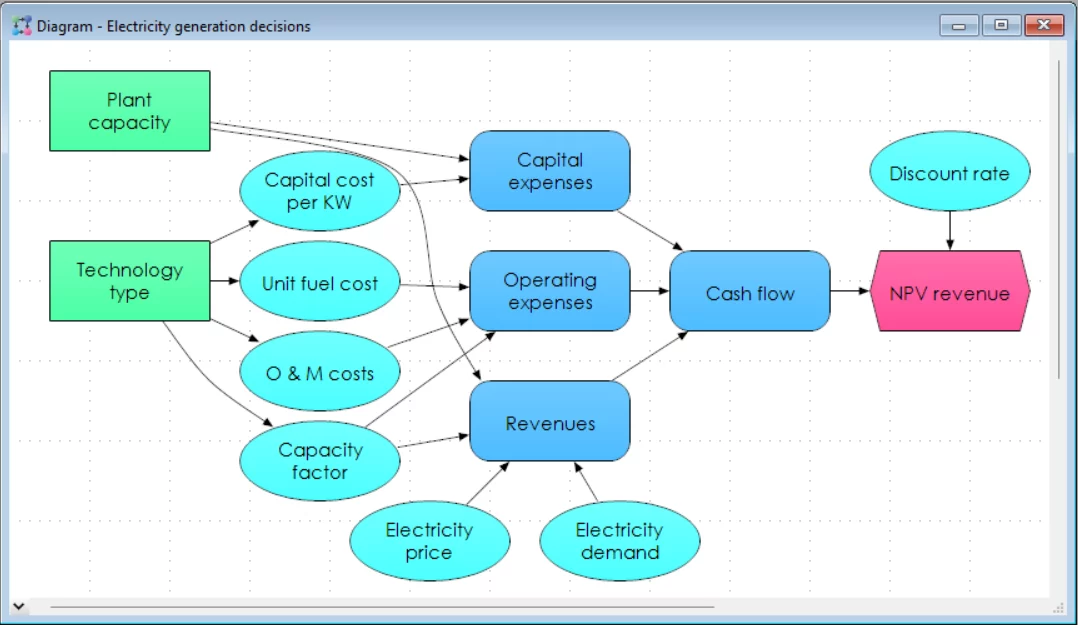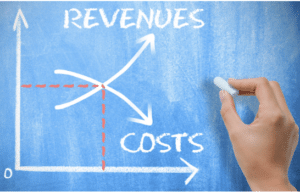
First, they find it fast and fun to use, and secondly, they find it makes their work more rewarding and profitable.
Why is modeling with Analytica so fast and fun?
- Visualization: Influence diagrams help you structure your clients’ problems much faster and more effectively than you can in a spreadsheet. You identify visually which variables are decisions, objectives, uncertainties, constraints, and more.
- Scalability: Intelligent arrays let you start simple and then scale it up by adding dimensions and expanding details as needed—tasks that require painful surgery in spreadsheets and coding languages.
- Flow architecture: Analytica lets you define each variable separately without having to worry about the flow of control and possible side effects—unlike R, Python, and other conventional procedural languages, which require endless testing and debugging.
- Integration: Analytica’s features work together as an integrated whole—you don’t need to buy add-ins to retrofit it for sensitivity analysis, Monte Carlo, optimization, data mining, or third-party libraries with incompatible releases.
Agility: You start by quickly creating a simple working prototype. You can use sensitivity analysis to see which assumptions are most critical—where it’s worthwhile to expand the model or get more data. This agile process generates insight early on. It lets you focus your efforts on what really matters and avoid wasting time on things that don’t.
Interactivity: With Analytica you can test your model and generate insightful graphs as you build it, all in the same interactive development environment. You can instantly share it via the web with your colleagues and clients using the Analytica Cloud Platform (ACP), so they can share in the fun of exploring alternative scenarios and finding new insights.
Reusability: You can easily adapt and extend existing models for new clients and applications, without requiring the kind of reconstructive surgery you usually need with spreadsheets.
These are reasons we’ve heard from consultants for why they can build models up to 10 times faster using Analytica instead of spreadsheets, or programming in R and Python. And why they find using Analytica so satisfying.

How does Analytica make consulting more rewarding and profitable?
- Build better models in less time: Because you can build models faster, quite simply it costs you less to create more value for your clients.
- Avoid expensive coders: As a consultant, you can build models tailored to your clients’ needs yourself—without having to hire and manage a team of high-priced software developers and data scientists. You also avoid the time and effort of onboarding coders.
- Gain stakeholder consensus: Influence diagrams help you visualize the problem with your clients, like a digital whiteboard that everyone can rally around. Analytica’s clarity helps you build understanding and consensus—critical to getting stakeholders to buy into the results.
- Wow your clients: When clients ask questions, request additions, or provide new data, you can often make the changes and show them the results immediately. Which means happy clients in a fraction of the time.

6. Provide interactive tools: Conventionally consultants deliver results in presentations or reports. With Analytica, you can give clients interactive decision web applications. That lets them explore results themselves and share insights around their organization. This way, anyone can begin using, testing and benefiting from the software!
7. Generate recurring business: Providing these kinds of interactive tools, along with the greater client engagement and satisfaction, greatly increases the chance that they will come back to you for enhancements and new projects.






